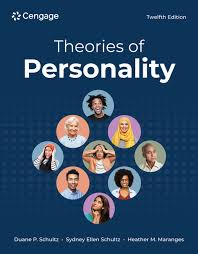Description
Theories of Personality” is a book to span the various theories and models relevant to personality development and traits. There are different editions and authors, but an overview of about an average would include essential perspectives and approaches in personality psychology. Here are the central themes and theories normally included:
Overview:
Psychodynamic Theories:
Sigmund Freud: Covers the personality structure (id, ego, superego) and unconscious activity with early childhood events.
Carl Jung: Contributions include the collective unconscious and archetypes, basing the scales of his own introversion and extraversion.
Humanistic Theories:
Abraham Maslow: Humanistic theories primarily point out self-actualization and the hierarchy of needs which demonstrate the way a person works to develop towards and achieve his potential in life.
Carl Rogers: Functions on unconditional positive regard and a caring supportive environment that plays a crucial role in developing the concept of self.
Trait Theories:
Gordon Allport: Describes traits as stable characteristics that guide behavior.
Raymond Cattell: The individual uses factor analysis to come up with 16 personality factors.
The Big Five: Creates the Five Factor Model, a model that refers to OCEAN, which describes openness, conscientiousness, extraversion, agreeableness, and neuroticism.
Behavioral and Social Learning Theories:
B.F. Skinner: He used behaviorism and studied reinforcement as well as punishment, to determine personality.
Albert Bandura: Came up with social learning theory by emphasizing learning through observation and developed the concept of self-efficacy.
Cognitive Theories:
It discusses ways in which thought patterns and processes in the mind determine personality-which scientists George Kelly and Aaron Beck propose theories about.
Biological and Evolutionary Theories:
Discussion on how genetic and biological make-up determine personality traits and how evolutionary principles may apply to personality development is presented.
Conclusion:
The book tends to synthesize these theories, indicating their implications, applications, and criticisms. The book, at the same time, emphasizes personality complexity, pointing out the fact that no single theory can fully explain personality in all its mystery. This overview enables students and readers to understand the scope of thought used in personality psychology and to think more critically about how personality is formed and expressed.










Reviews
There are no reviews yet.